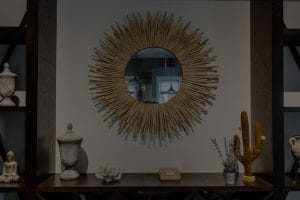**Abstract:**
Unlock the power of harmony in your living space with Feng Shui. This guide explores practical ways to incorporate Feng Shui energy into your home decor, promoting balance and well-being.
Understanding Feng Shui Basics
Feng Shui, an ancient Chinese practice, focuses on the flow of energy or “Chi” in our environments. The core principle is that our surroundings can significantly influence our mood, health, and overall quality of life. By aligning your home decor with Feng Shui principles, you can create a harmonious space that nurtures positive energy. This practice involves strategic placement of furniture, color selection, and the use of specific symbols that resonate with your intentions.
Assessing Your Space
Before diving into decor changes, assess your current living space. Walk through each room and observe the energy flow. Are there areas that feel cluttered or stagnant? Identifying these spaces is crucial for effective Feng Shui application. Take notes on what you feel drawn to and what feels off. Remember, Feng Shui is about creating a supportive environment, so trust your instincts.
Decluttering: The First Step to Harmony
Decluttering is essential in Feng Shui. Clutter not only blocks energy flow but can also create feelings of anxiety and overwhelm. Start with one room at a time, removing items that no longer serve you. This process can be liberating and can significantly improve the energy in your home. Remember, each item should spark joy or serve a purpose.
Color Choices: The Language of Energy
Colors play a vital role in Feng Shui. Each color corresponds to specific energies and emotions. For example, blue promotes calmness, while red symbolizes passion and vitality. Consider incorporating these colors through paint, decor, or accessories. Use soft, natural tones for a serene environment, or vibrant hues to energize a space. The right colors can uplift your mood and enhance the overall energy of your home.
Furniture Placement: Creating Flow
The arrangement of furniture is critical in Feng Shui. Ensure that furniture is positioned to allow for smooth movement and open pathways. Avoid placing furniture directly in line with doors, as this can block energy flow. Instead, create cozy conversation areas that encourage interaction and connection. The goal is to facilitate a natural flow of Chi throughout your home.
Incorporating Nature: Bringing the Outdoors In
Nature is a powerful source of positive energy. Incorporate plants, flowers, or natural materials into your decor. Plants not only purify the air but also symbolize growth and vitality. Choose low-maintenance varieties like succulents or snake plants if you’re new to plant care. Additionally, natural materials like wood and stone can add warmth and grounding energy to your space.
Symbolism: Enhancing Your Intentions
Feng Shui is rich in symbolism. Incorporate meaningful items that resonate with your intentions. For instance, a water fountain can symbolize abundance, while mirrors can enhance light and space. Choose decor that aligns with your goals, whether it’s love, prosperity, or health. These symbols serve as reminders of your aspirations, helping to maintain focus on your intentions.
Creating a Balanced Environment
Balance is key in Feng Shui. Aim for a mix of Yin (soft, passive) and Yang (active, vibrant) elements. This can be achieved through lighting, textures, and decor styles. For example, pair soft fabrics with bold artwork to create visual interest and balance. Regularly reassess your space to ensure it continues to reflect harmony and balance.
Conclusion: Your Journey to a Harmonious Home
Incorporating Feng Shui energy into your home decor is a journey toward creating a space that nurtures your well-being. By understanding the principles of Feng Shui, assessing your space, and making intentional decor choices, you can transform your environment into a sanctuary of peace and positivity. Embrace the process, and enjoy the benefits of a harmonious home that supports your life’s journey.










